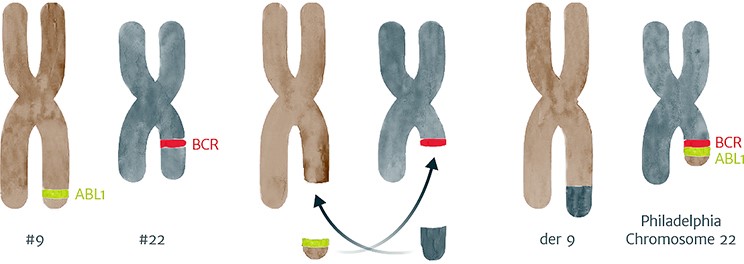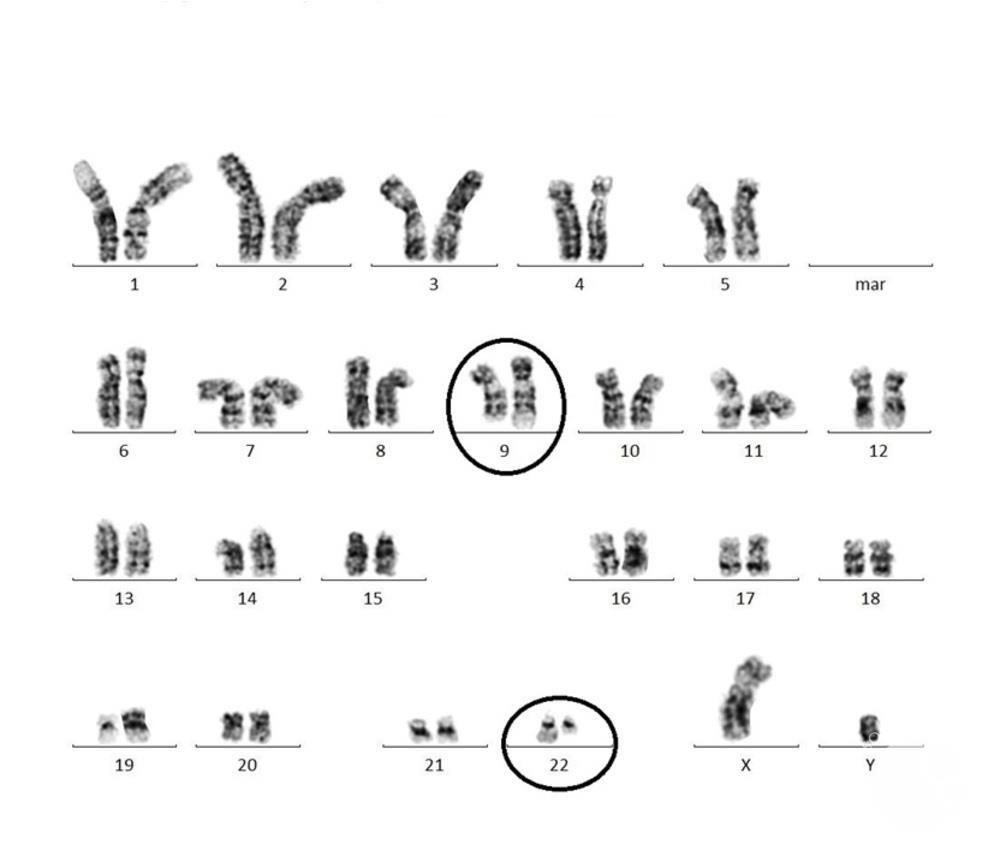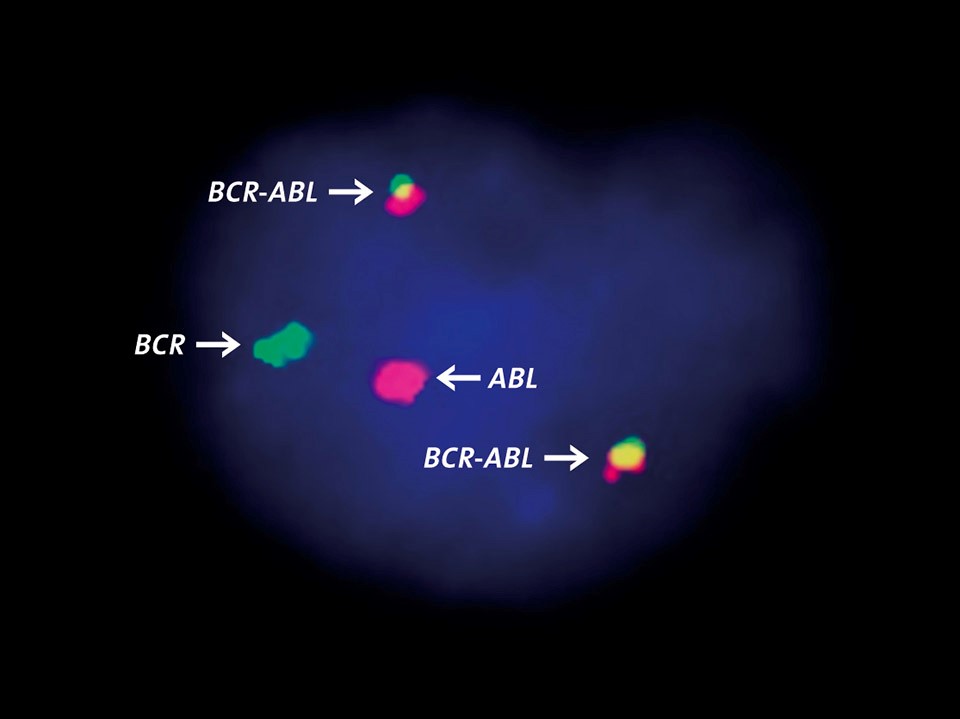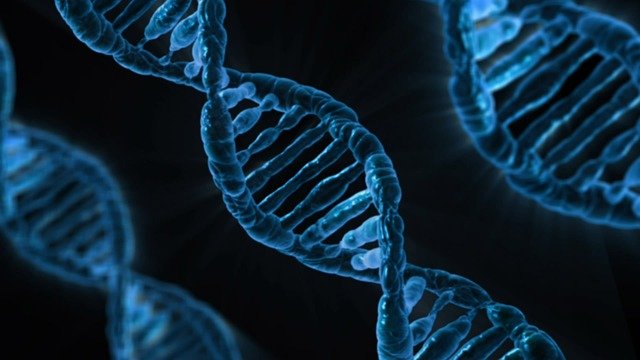If you’ve taken a Hematology class, the term “BCR-ABL” is probably followed up quickly in your head by thoughts of the Philadelphia chromosome and Chronic Myeloid Leukemia (CML). If you haven’t gotten to Hematology yet in your education as a laboratory professional, save those terms for later; you will see them soon! In a nutshell, the Philadelphia chromosome is a defective chromosome 22 that has exchanged genetic material with chromosome 9, resulting in an oncogene (a gene abnormality that often leads to production of cancerous cells) called BCR-ABL. This oncogene contributes to the uncontrolled proliferation that leads to CML.
If you’re looking for the critical, high-yield information on BCR-ABL to pass your exam, that’s probably all you need to know. However, if you’re like me and you find cancer genetics to be particularly interesting, keep reading! We’re going to take a deeper dive into this topic.
First, let’s break down the terminology a little. The Philadelphia chromosome is caused by a translocation labeled t(9;22)(q34;q11). The “t” is for translocation, and it is an exchange between the q arms of chromosomes 9 and 22. The q34 region of chromosome 9 is where the ABL gene is located, and q11 of chromosome 22 is the location of the BCR gene.

Detecting the BCR-ABL Translocation (Philadelpia Chromosome)
As you can see in the image above, the resulting Philadelphia chromosome is actually shorter than a normal chromosome 22. This makes it detectable on a karyotype to cytotechnologist’s trained eye, as illustrated in the image below.
This photo shows a patient’s karyotype, which puts images of their chromosomes in numerical order and allows a cytotechnologist to observe the banding patterns of the chromosomes and identify alterations in the banding patterns and amount of DNA on each. Here we see the shortened chromosome 22 and the apparent exchange of DNA material between chromosomes 9 and 22.

Image is property of imagebank.hematology.org
Another method of detecting the BCR-ABL translocation is FISH (Fluorescence In Situ Hybridization). FISH uses fluorescent tags that attach to known gene sequences. In the example below, the BCR gene is green and the ABL gene is red. Where the BCR-ABL gene fusion is present, the green and red tags produce a yellow color.

Image is property of sysmex.se
So now that we know what BCR-ABL is and how to find it, what does it actually do?
The Wrath of the Philadelphia Chromosome
The ABL gene produces a tyrosine kinase, an enzyme that is found in many tissues of the body. It helps transduce signals from growth factors to aid in cell growth. The BCR gene product is a signaling protein with many domains, meaning multiple sites where signaling molecules can bind. When the two fuse, the tyrosine kinase activity of ABL increases, and is continuously upregulated by the domains of BCR. This mutation occurs in the hematopoietic stem cell in your bone marrow, which eventually differentiates into a granulocyte progenitor, a type of immature white blood cell. The uninhibited growth of these granulocytes is what we then see under the microscope in the hematology laboratory.

Image is property of ascopost.com
In Conclusion
So, that is a little behind-the-scenes look into the BCR-ABL translocation and how it contributes to CML. As scientists, the more we uncover about the processes that lead to cancer, the more resources we will have to treat and maybe even cure it someday. As a Medical Laboratory Scientist working in hematology, it is important to me to always be expanding my knowledge on these topics so that I truly know what I am looking at when I head to the microscope. Remember, there is always a patient behind every slide, and we owe it to them to be careful and precise with each cell we examine.

